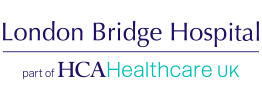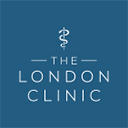
Headache
Headache is a common complaint which is rarely serious but can be debilitating.
In some cases, however, it can be the first symptom of a life threatening condition such as meningitis, cerebral thrombosis or brain tumour. These sinister headaches often come on suddenly and are accompanied by other symptoms such as weakness or sensory disturbance All patients with new onset headaches should have a full neurological assessment to exclude the possibility of a serious underlying condition.
The most frequent severe headache is migraine: over 20% of the population are sufferers, in many it goes unrecognised, and is not treated appropriately. Migraine is often not diagnosed if patients do not have typical symptoms such as throbbing one sided headache with vomiting and / or visual disturbance. It is now acknowledged that migraine can present in many different ways, from severe headache to just dizziness with no headache.
Fortunately the treatment of migraine has advanced greatly in the last few years and there are many treatment options now available. This allows for effective ‘personalised’ care with the appropriate specialist knowledge. Previously the principles of treatments were lifestyle changes and strong pain relief at the onset of a headache and then preventative tablets to stop frequent migraines. The preventative medications were only partially effective and had many side effects, such as drowsiness. There are new preventative medications, such as candesartan, supplements for example Vitamin B2, but also non-tablet treatments such a Botox injections or devices such as ‘GammaCore’ vagal nerve stimulatory. The greatest development is the improved understanding of migraine biology which has identified calcitonin gene-related peptide (CGRP) as key to the migraine process. Monoclonal antibodies which block CGRP receptors can be given as monthly to three monthly injections such as erenumab (Aimovig) or galcanezumab which have been proven to be highly effective with few side effects and will become the mainstay of treatment for regular migraine sufferers. Similarly acting small molecules known as ‘gepants’ are also being developed which are likely to be in tablet form. For individual migraine attacks future drugs include serotonin 5-HT1F agonists (e.g. lasmitidan) which aim to be more effective and better tolerated than current triptans. In summary there are rapid and promising developments in the pharmacological treatment of migraine but lifestyle remains important component in the management of migraine.
Occasionally patients end up taking too many pain killers and develop what is called ‘medication overuse’ or ‘analgesia’ headache. This cause is often overlooked and needs carefully planned management. Less common, but usually severe headaches are ‘cluster headache’, ‘paroxysmal hemicranias’, ‘sex or exercise induced headache’, and very rare but dramatic is ‘low cerebrospinal fluid volume headache’. These conditions are frequently missed and require specialist management, each having different sensitivities to different therapies and do not respond to most pain-killers.




